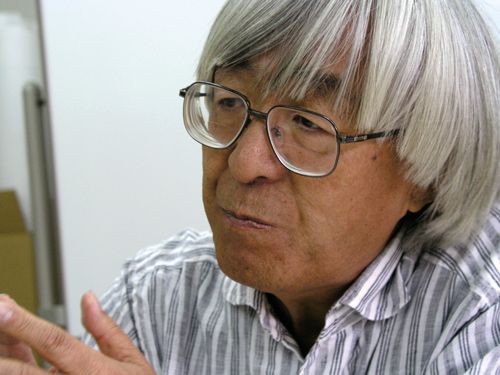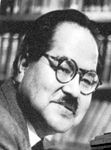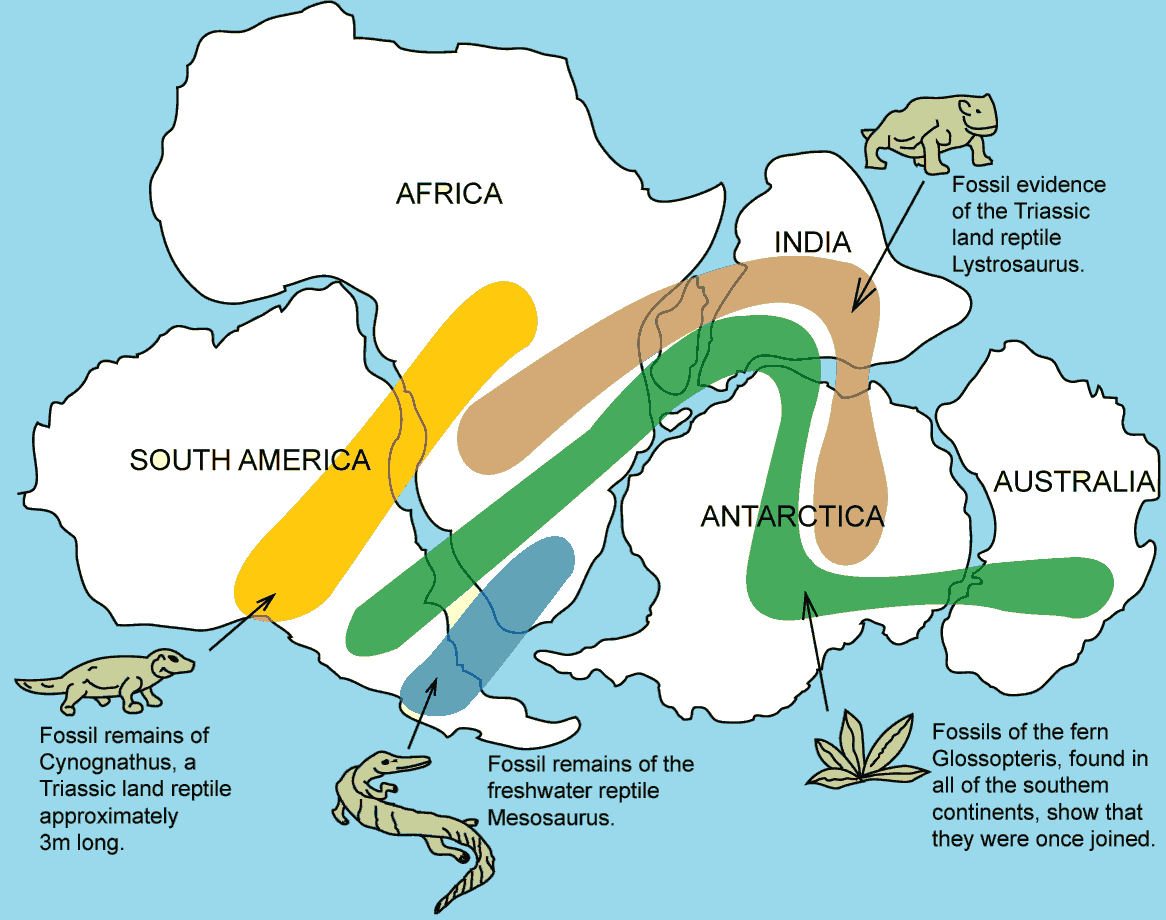(Upload on June 3 2023) [ 日本語 | English ]
Mount Usu / Sarobetsu post-mined peatland
From left: Crater basin in 1986 and 2006. Cottongrass / Daylily
HOME > Lecture catalog / Research summary > Glossary > Scientist
[ Ecologist | Taxonomist | References ]
Scientist(s.l.) A person who is one engaging in a systematic activity to acquire knowledge.(s.s.) A scientist is an individual who uses the (natural) scientific method. University professors are not always scientists. von Humboldt, Friedrich Wilhelm Heinrich Alexander 1769-1859 born in Berlin, Prussia, geographer, naturalist and explorer botanical geography (influencing Darwin), firstly proposed the continents were eonce joined 1799-1804: traveling Latin America König Gottlob 1779-1849, German, forestry scientist - forest care (撫育)
"Forest is the most beautiful decoration of the country (森林は国土の最も美しい装飾である)" microbiologist, environmental thinker
1939 antibiotic discovery (isolated tyrothricin) |
Sapporo Agricultural College (札幌農学校)Clark, William Smith (1826-1886)Boys, be ambitious like this old man. Penhallow, David Pearce (1854-1901)Wheeler, William (1851-1932) Brooks, William Penn (1851-1938) ☛ Tatewaki M (舘脇 操) von Salisch, Heinrich (フォン・ザーリッシュ)1846-1920, born in Jeschütz (now Ujeździec)1885 Forstästhetik (Forest aesthetics, 森林美学) 1902 2nd edition (translated into English in 2008) 1911 3rd edition |
| Rsearchers affiliated with Hokkaido University | |
|---|---|
Ukichiro NAKAYA (中谷宇吉郎) 1900-19621900 Born in Kaga, Ishikawa1923 Met physicist Torahiko Terada at the University of Tokyo 1932 Joined Hokkaido University faculty (Began snow crystal research) 1936 Completed cold-room laboratory at Hokkaido University
Produced artificial snow crystals firstly in the world on March 12 An early voice on climate change and spoke out publicly
|
Hiromu OKADA (岡田 弘)
Family Doctor of Mt. Usu1943-Mr. Okada started researching the prediction of eruptions on the day before the eruption of 1977. Stationed at the Usu Volcano Observatory from 1981 to 2001, he predicted the eruption of 2000 and successfully organized the early evacuation with zero casualties through coordinated community efforts. He was known as the “Family Doctor of Mt. Usu” and also as a major proponent for the registration of Mt. Usu as a Global Geopark. |
|
1879/03/04-1955/04/18, German-born theoretical physicist 1905 introduced special relativity proposed mass–energy equivalence formula, E = mc2 1916 introduced general relativity1927 modeled the structure of the universe by the general relativity theory 1921 Nobel Prize in Physics We do not have to say any more. |
☛ Words of wisdom • Look deep into nature, and then you will understand everything better.
• Look deep into nature, and then you will understand everything better.• Learn from yesterday, live for today, hope for tomorrow. The important thing is not to stop questioning. • Everything should be made as simple as possible, but no simpler. • A normal adult never stops to think about problems of space and time. These are things which he has thought about as a child. • Education is what remains after one has forgotten everything he learned in school. • Curiosity has its own reason for existing. • The more I learn, the more I realize I don't know. The more I realize I don’t know, the more I want to learn. |
A brief history of plant ecology viewing from ecologistsWarming, Johannes Eugenius Bülow (nickname = Eugen) (1841.11.3-1924.4.2, Denmark), The father of plant ecologyPlantesamfaud (植物群落) proposed in 1895
An important part has perhaps been played by means of climate, which on the whole has become milder. Schröter, Carl (1855-1939, Switzerland), phytogeology
established phytosociology within the Zurich-Montpellier school
Schimper AFW. 1903. Plant geography upon a physiological basis. (Lubrecht & Cramer Ltd; Translated and reprinted edition, June 1960) Tansley, Arthur George (1871-1955, Engliand)
1935 ecosystem
Gleason, Henry Allen (1882-1975): Individualistic (or continuum) concept of plant associations
-. 1917. Bull. Torrey Bot. Club 43:463-481. -. 1926. Bull. Torrey Bot. Club 53:1-20. -. 1939. Amer. Midl. Nat. 21:92-110 |
Boysen-Jensen, Peter (1883-1959), Danish plant ecophysiologist
1910 shown the presence of growth hormone(s), started in 1907 heritability of traits in plant species, common garden approaches, ecotypes Braun-Blanquet, Josias (1884-1980), phytosociologyvegetation analysis and classification Stebbins, George Ledyard (1906-2000)comprehensive analyses of population and geographic variation in plants Billings, William Dwight (1910-1997)ecophysiology (gas exchange, water potential, temperature, etc.) Grant, Verne (1917-2007)
Grant V. 1971. Plant Speciation. Columbia University Press 1931 Animal aggregations: a study in general sociology
Allee effect: being too rare can be risky 1970-present: Allozyme studies in plant ecological genetics Harper, John Lander (1925-2009): Harper (1977), Begon, et al. (1996) 1960-1974 International Biological Program (IBP) 1975-: scale from molecular techniques to biogeochemistry 1985-: DNA-based genetic markers in plant ecological genetics 1990-: PCR-based genetic marker techniques 1998-: quantitative trait locus mapping emerges as a revolutionary method for studying selection 2000-: plants rule at ESA meetings renewed focus on mechanisms that control distribution and abundance of plants Japan Tatewaki Misao (舘脇 操), 1899.9.8-1976.7.18
Tatewaki Misao (舘脇 操), 1899.9.8-1976.7.18
|
|
Germany: Meteorologist, geophysicist and polar researcher 1912: the theory of continental drift (大陸漂移説)
not widely accepted until the 1950s
|
 Fossil patterns across continents (Gondwana) |
|
France: proposed use-and-disuse theory 1778 Flore françoise, ou, Description succincte de toutes les plantes qui croissent naturellement en France |
1795 2nd edn, 1805 3rd edn 1809 Philosophie Zoologique1815–22 Histoire naturelle des animaux sans vertèbres Lamarckian evolution (Lamarckism or lamarckian theory) |
|
England: naturalist, evolutionist and geologist 1831-1836 Second voyage of HMS Beagle 1842 published The structure and distribution of coral reefs 1844 - Geological observations on the volcanic islands, visited during the Voyage of HMS Beagle stayed on the island for 5 weeks 1846 - Geological observations on south America |
1859 - On the origin of speies by means of natural selection 1868 - The variation of animals and plants under domestication 1871 - The descent of man, and selection in relation to sex 1872 - The expression of the emotions in man and animals 1875 - Insectivorous plants. John Murray, London 1888 - Insectivorous plants (2nd ed). John Murray, London Reported 14 genera in six families (revised by his son, Darwin F) |
described vegegtation associations and formations in North America, patterns and processes of succession (遷移), species as environmental indicators, climax community concept
|
On vegetation as a 'superorganism': ... a study of vegetation reveals that it is an organic entity and that, like an organism, each part is interdependent upon every other part ... the development of vegetation consists of a number of closely related processes...like all organisms, vegetation arises, develops, matures, reproduces, and may eventually die ... vegetation, like all organisms, not only undergoes development but also possesses structure On climax vegetation and climate: "Depending upon climate, composition or structure varies (e.g., grassland, forest, tundra); these large units are formations or biome (バイオーム). The climax formation is not merely the response to a particular climate, but is at the same time the expression and indication of this climate
1939 Emerson AE: proposed the term superorganism Plant formations (植物共同体, 群落)proposed by Clements ≠ an organic entity.Ex. Fagus, Abies, Picea, tundra
↓ initiation ←seed |
|
A Danish botanist and plant ecologist, being famous by the proposal of life-form concept A professor in botany at the University of Copenhagen, Denmark, and the director of the Copenhagen Botanical Garden (1911-1923) |
|
|
|
|
Kihara Hitoshi 木原 均 (1893.10.21-1986.7.27), genetics The history of the earth is recorded in the layers of its crust; The history of all organisms is inscribed in the chromosomes. Keiteki dormitory |
Carl Linnaeus (Carl von Linné)Naturalist (taxonomist), Sweden (Father of modern classification)
Born: May 23 1707 in southern Sweden 1735 Systema Natureæ (System of nature, 自然の体系) 1736 Fundamenta Botanica (1740 2nd edn. 1741 3rd edn.) 1737 Critica Botanica 1737 Genera Plantarum (植物属誌): 935 genera 1738 Classes Plantarum (classes of plants) (植物の綱) 1751 Philosophia Botanica (Botanical Philosophy, 植物哲学) the first textbook of descriptive systematic botany and botanical Latin (binomial nomenclature) 1753 Species Plantarum (1st edn) (植物種誌)Principle of priority is effective after this publication (names propobsed before this publication are not accepted) 1764 Genera Plantarum (6nd edn): 1239 generaBentham, George, CMG FRS1800-1884, UK
Hooker, Sir Joseph Dalton1817-1911, UK1844-1847 Flora Antarctica 1851-1853 Flora Novae Zelandiae 1855 Flora Indica 1860 Flora Tasmanica 1872-1897 Flora of British India
Engler, (Heinrich Gustav) AdolfPlant taxonomist, German
Born: March 2 1844. Sagan, Prussia 1924 Engler-Glig: Syllabus der Pflanzenfamilien 9/10 Aufl. 1936 Engler-Diales: Syllabus der Pflanzenfamilien 11 Aufl. 1954 Melchior H und Wedermann E: Engler's Syllabus der Pflanzenfamilien 12 Aufl. New Engler's SyllabusJapanCollecting plant specimens from Japan1682 Meister, Georg (1653-1713, German), gardener 1682 Cleyer, Andreas (1634-1697, Holland), botanist they visited Japan Kaempfer, Engelbert 1651-1716, Germany1690-1691: stayed in Dejima as the doctor of Dutch trading house 1712 Amoenitatum exoticarum politico-physico-medicarum (廻国奇観) ☛ introduced Ginkgo biloba (イチョウ) to Europe 1727 The History of Japan (日本誌)posthumous writings translated into English |
1777-79 Geschichte und Beschreibung von Japan
German version of the "History of Japan" Thunberg, Carl Peter 1743-18281775-1776: stayed in Dejima, as the doctor of Dutch trading house
collected ca 800 plant specimens → sent to the University of Uppsala Andrias japonicus, introduced to Europe von Siebold, Philipp Franz 1796-18661823-1829 (1st visit to Dejima): most specimens kept in Holland National University Museum at Botany Leiden University Branch (Siebold Japanese Plant Collection) 1828 Siebold incident: ship returning home wrecked due to stormcargo inspection - items prohibited for export → 1929 deportation 1859-1862 (2nd visit to Japan): specimens sold by his widow - kept in Collection of the Komarov Botanical Institute, Russian Academy of Sciences
plants - researched by Zuccarini 1797-1848: Flora Japonica 1835-1870, co-authored with Zuccarini flora of Japan (collected by Siebold) and Mexico (by von Martius) Gray, Asa 1810-1888 (botany, USA) vs Agassiz1858/12/10: Cambridge Scientific Club Manual of the Botany of the Northern United States, from New England to Wisconsin and South to Ohio and Pennsylvania Inclusive
1852 arrival of the black ships of Commodore Perry in Uraga collected a few plant specimens by on-board Williams, S. Wells (missionary) and Morrow James (agronomist) → sent to Gray 1853 Wright, Charles (1811-1885)
joining North Pacific Exploring and Surveying Expedition → ⇒ Tertiary-origin hypothesis proposed with Dana, James Dwight 1813-1895 (geology) Miquel, Friedrich Anton Wilhelm 1811-1871 (botany, Dutch)plants in dutch colonies (particularly East Indies) Franchet, Adrien René 1834-1900 (botany, France)taxonomy and origin of (European) alpine plants - sudden death Savatier, Paul Amédée Ludovic 1830-1891
stayed in Japan during 1868 and 1871 and during 1873 and 1876
stayed in Japan during 1860 and 1864 |
|
the ordained (December 25 1846) the founder of the modern science of genetics (heredity) 1856-1863: pea plant experiments published the results and discussion of experiments in 1866 1865.02.08/03.08 lecture in Brno Natural History Society
introduced the present Mendelian laws - no response
40 copies sent to famous scientists, including Darwin |
1900 Rediscovery of Mendel's laws (more than three decades later)
Erich von Tschermak, Hugo de Vries and Carl Correns independently verified Mendel's experiments the laws of Mendelian inheritance |
[ philosophy ]
|
Fichte, Johann Gottlieb (フィヒテ), 1762-1814, German
influenced by Kant Hegel, Georg Wilhelm Friedrich (ヘーゲル), 1770-1831, GermanHeidegger, Martin (ハイデガー) 1889-1976, German Foucault, Paul-Michel (フーコー), 1926-1984, France structuralism, postmodernism Gottlob Frege, Friedrich Ludwig (ゴットロープ・フレーゲ) 1848-1925, German Philosopher, in particular, for analytic philosophy, logician and mathematician |
Lyotard, Jean-François (リオタール), 1924-1998, France Philosopher, sociologist, and literary theorist The postmodern condition Derrida, Jacques (デリダ), 1930-2004, France post-structuralism and postmodern philosophy developing a form of semiotic analysis known as deconstruction
1967 Speech and Phenomena |
|
1788-1860, German 1939 On the Freedom of the Will 1840 On the Basis of Morality 1851 Parerga and Paralipomena |
|
Modern philosophy
Transcendental idealism |
Categorical imperative 1788 Kritik der praktischen Vernunft (実践理性批判) 1790 Kritik der Urteilskraft (判断力批判) |
|
Philosopher/theologian
founder of modern existential philosophy (実存哲学) 1813-55, Denmark |
|
1844-1900, German Apollonian and Dionysian Perspectivism The "slave revolt" in morals |
Death of God and nihilism Will to power Eternal return Übermensch |
|
1818 born in Trier, Germany
affected by industrial revolution 1836 advanced to Berlin University - interest in the Young Hegelian 1841 submitted the thesis to the University of Jena Differenz der demokritischen und epikureischen Naturphilosophie 1841 Rheinische Zeitung (Prussian Era)
Realization of the holistic national ideology (Zur Judenfrage) ⇒ on human emancipation 1844 A criticism of the Hegelian philosophy of right (ditto)(Zur Kritik der Hegel'schen Rechtsphilosophie) 1844 "Ökonomisch-philosophische Manuskripte (経済学・哲学草稿)"
discovered the manuscript in 1932 Workers: alienation from product, process, self and others 1845 exiled from Paris to Brussels
1846 "Die deutsche Ideologie (ドイツ・イデオロギー)"
1848 "the Communist Manifesto (共産党宣言)", with Engels (Der achtzehnte Brumaire des Louis Bonaparte) 1859 "Zur Kritik der Politischen Ökonomie (1)"1860 "Herr Vogt" |
1867 "Das Kapital (vol 1)"
analysis of the capitalist economy 1883 died in LondonLargely influenced the formation of socialist states Engels, Friedrich (エンゲルス), 1820-18951820 born in Barmen, Prussia (Wuppertal, Germany in the present)1839-1941 "Briefe aus dem Wuppertal (The Wuppertal Diary)", anonymous reported harsh working conditions in factories when he was 18 1842 moved to Manchester, England, for the business of his father
met Marx in Köln (Germany) at the first time influenced Marx largely 1845 "The condition of the working class in England"1847-1867? published papers with Marx 1864 established IWA (第一インターナショナル) with Marx
IWA = International Workingmen's Association 1878 "Anti-Dühring (反デューリング論)" 1880 "Socialism: Utopian and scientific (空想より科学へ)" Lenin, Vladimir (レーニン), 1870-1924= Ulyanov, Vladimir Ilyich (autonym)1917 February Revolution (二月革命) 1917 October Revolution (十月革命) Stalin, Iosif Vissarionovich (スターリン), 1878-19531924-1953 absolute dictator1941-1947 the Minister of Defence |
|
1938 La Nausée (嘔吐) existentialism and phenomenology influencing sociology, critical theory, post-colonial theory and literary studies 1943 Being and Nothingness (存在と無)Les Chemins de la liberté (自由への道)
1945 Part 1. L'Âge de raison (分別ざかり) |
Question de méthode (The problem of method) (1957)
the relationship between Marxism and existentialism
+ the role of dialectics
→ losing its original dialectical nature = individual freedom (↔ Marxism = historical determinism) 1964 Les Mots (The Words, 言葉): autobiography1964 Nobel Prize in Literature: declined by Sartre |